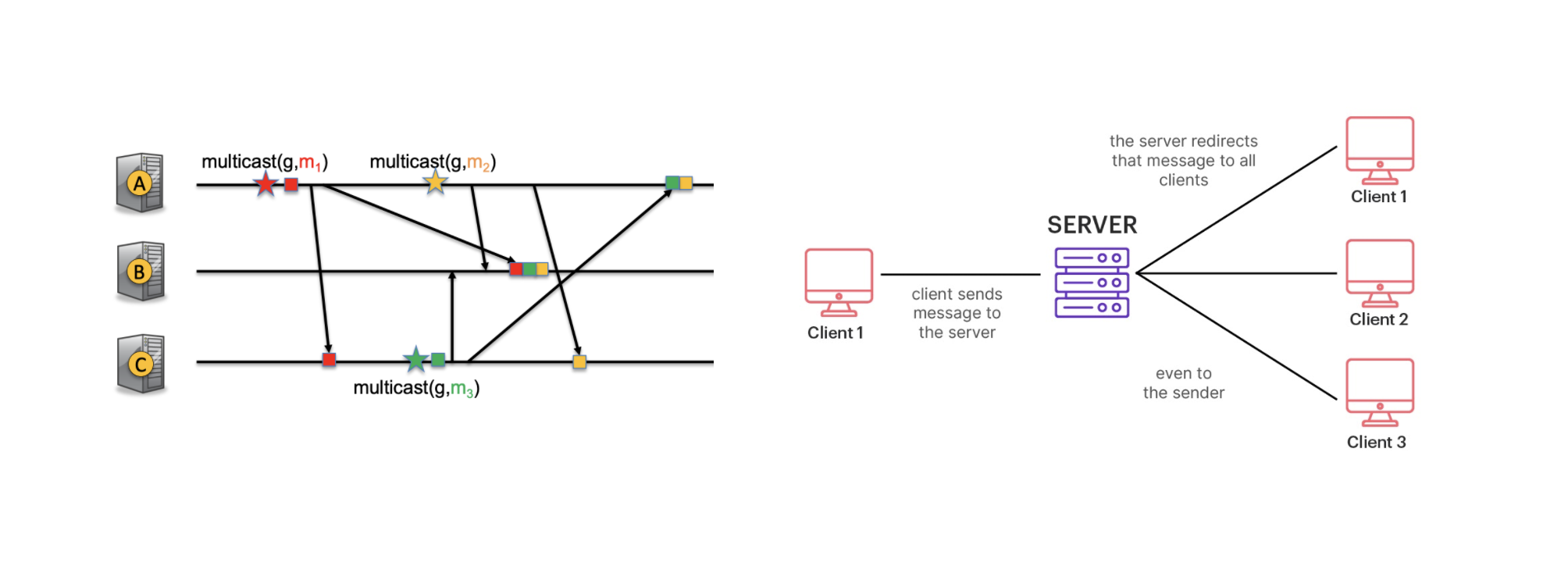This repository contains implementation of a distributed software system. The goal is to design a small clone of Google Apps that primary consists of just two key apps: webmail and storage (similar to Gmail and Google Drive) and leaves out other fancy optics. The key components includes a web frontend and a key-value store backend. This work was done in collaboration with Thomas Donnelly, Katrina Ashton, and Jacob Glenn.
Design A basic session consists of a client connecting to our load balancer and getting redirected to a running frontend server.
This repository contains implementation of a simple replicated chat server that uses multicast to distribute the chat messages to the different replicas. The servers have the option to deliver clients’ messages following three different types of ordering protocols: Unordered, FIFO, or total. All communications are done via unicast UDP.
Overview The figure below shows a sketch of the system. There are two kinds of processes: servers (represented by orange squares) and clients (represented by yellow circles).
This repository contains implementations of Sequence-to-sequence (Seq2Seq) neural networks for abstractive text summarization. We implement Attention mechanism, Teacher Forcing algorithm, and Pointer-Generator Network (inspired by Get To The Point: Summarization with Pointer-Generator Networks) in our experiment to improve our baseline models. This work was done in collaboration with Henglin Wu, Ruilin Zhao, and Chenyuan Li.
[paper] [code]
Watch our video presentation below:
Introduction Sequence-to-sequence (Seq2Seq) neural networks have been proved to be effective in tasks that involve transforming text from one form to another (e.
This repository contains implementations of Generative Adversarial Networks (GANs) to design and generate new face images of anime characters. A few improvement techniques were implemented to enhance the performance of the Deep Covolutional GANs (DCGANs) as well as the quality of the output. Also included is an implementation of Least Squares GAN (LSGAN) and NVIDIA’s open source StyleGAN. StyleGAN and StyleGAN2 are new state-of-the-art GAN architectures developed by a team from NVIDIA.



